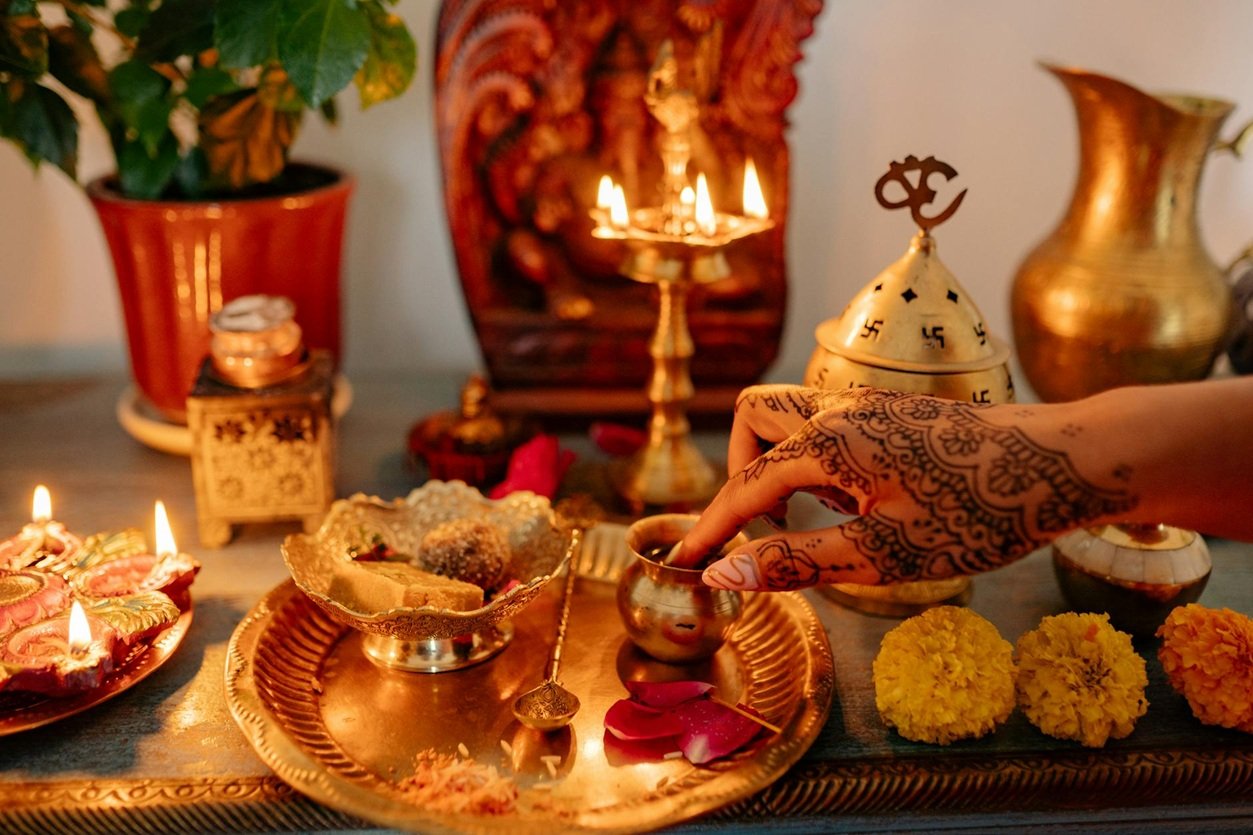Pooja, or worship, is an integral part of Hindu culture and spirituality. It is a way for devotees to connect with the divine, express gratitude, and seek blessings. The essence of a successful pooja lies not just in the rituals performed but also in the proper selection of pooja samagri, which refers to the materials and items used during the worship. This article aims to provide a comprehensive guide on essential pooja samagri, helping devotees understand what they need for various rituals and how to use them effectively. Whether you are a seasoned practitioner or a newcomer to the world of pooja, this guide will equip you with the knowledge to enhance your spiritual practice.
Understanding Pooja Samagri
Pooja samagri encompasses a wide array of items, each serving a specific purpose in the worship rituals. These materials are often categorized based on their usage, with some being essential for daily prayers, while others are reserved for special occasions and festivals. Common items include flowers, fruits, incense sticks, and specific offerings unique to deities. Each item holds symbolic significance, and understanding these meanings can deepen the experience of worship. For instance, flowers are often offered to symbolize beauty and devotion, while fruits represent the bounty of nature and gratitude for life’s blessings.
Essential Items for Daily Pooja
For daily pooja practices, certain items are considered essential to maintain a regular connection with the divine. One of the fundamental items is a clean pooja thali, which serves as the base for placing all other materials. The thali should be adorned with a small diya (lamp) or candle to symbolize the removal of darkness and the presence of light. Additionally, devotees usually require fresh flowers, which are often offered to deities as a symbol of purity and devotion. Specific offerings such as milk, honey, and ghee (clarified butter) are also essential for daily rituals, as they represent nourishment and sustenance.
Fruits and Sweets: Symbolism and Importance
Fruits and sweets play a significant role in pooja offerings, acting as a gesture of gratitude for the blessings received from the divine. Fruits, particularly bananas, apples, and coconuts, are commonly offered due to their symbolism of abundance and health. They are not only a form of offering but also represent the connection between the devotee and the divine, signifying their willingness to share nature’s bounty. Sweets, on the other hand, symbolize the sweetness of life and are often offered during festivals and special occasions, enhancing the celebratory aspect of worship.
Incense and Aromas: Creating a Sacred Atmosphere
In Hindu worship, creating an ambiance conducive to spirituality is crucial, and this is where incense and aromatic items come into play. Incense sticks, dhoop (a type of incense), and essential oils are commonly used to create a fragrant atmosphere that uplifts the spirit and purifies the space. The act of lighting incense while chanting prayers is believed to carry the devotee’s intentions to the divine. Additionally, specific types of incense are associated with particular deities, enhancing the connection between the worshipper and the divine presence.
Navaratri and Special Pooja Samagri
During festivals like Navaratri, the requirements for pooja samagri expand significantly. This nine-night festival dedicated to Goddess Durga involves elaborate rituals and offerings. Essential items during this time include the kalash (pot), which symbolizes the universe, and various grains and legumes for offering. Devotees also prepare special delicacies as prasad (offering), which is shared among family and friends after the rituals. The significance of these items lies not only in their physical offerings but also in the collective devotion and community spirit they foster during the festival.
Understanding the Importance of Cleanliness and Purity
In Hindu rituals, cleanliness and purity are paramount. Before beginning any pooja, devotees are expected to cleanse themselves and the pooja space. This includes bathing, wearing clean clothes, and ensuring that all items used in the ritual are purified. The concept of purity extends to the pooja samagri as well; fresh flowers, clean vessels, and unblemished fruits are prerequisites for an effective worship experience. The emphasis on cleanliness signifies respect for the divine, promoting a sense of sanctity within the worship environment.
Eco-Friendly Pooja Samagri: A Modern Approach
With increasing awareness of environmental issues, many devotees are now opting for eco-friendly pooja samagri. This includes using biodegradable items like clay idols, organic flowers, and natural incense made from herbs. The use of eco-friendly materials not only aligns with spiritual values but also contributes positively to the environment. This modern approach reflects a growing consciousness among devotees to honor the divine while respecting nature, promoting sustainability in spiritual practices.
The Role of Mantras and Prayers in Pooja
While physical offerings are essential, the spiritual aspect of pooja is equally significant. Reciting mantras and prayers during rituals enhances the devotee’s connection to the divine. Each mantra has its unique vibrations and meanings, believed to invoke specific energies or blessings. The combination of these verbal offerings with physical samagri creates a holistic worship experience. Devotees often spend time learning the correct pronunciation and significance of mantras to ensure that their prayers resonate with the divine effectively.
Conclusion: A Holistic Approach to Pooja Samagri
In conclusion, understanding the essential pooja samagri is vital for anyone looking to deepen their spiritual practice. Each item serves a purpose, contributing to the overall experience of worship. From daily offerings to festival-specific rituals, the selection and use of pooja samagri reflect a devotee’s devotion and respect towards the divine. As one navigates through the intricacies of pooja, embracing eco-friendly practices and fostering a sense of community can further enrich this spiritual journey. Ultimately, pooja is not just about the materials used, but the intention, love, and devotion behind each offering that creates a meaningful connection with the divine.



